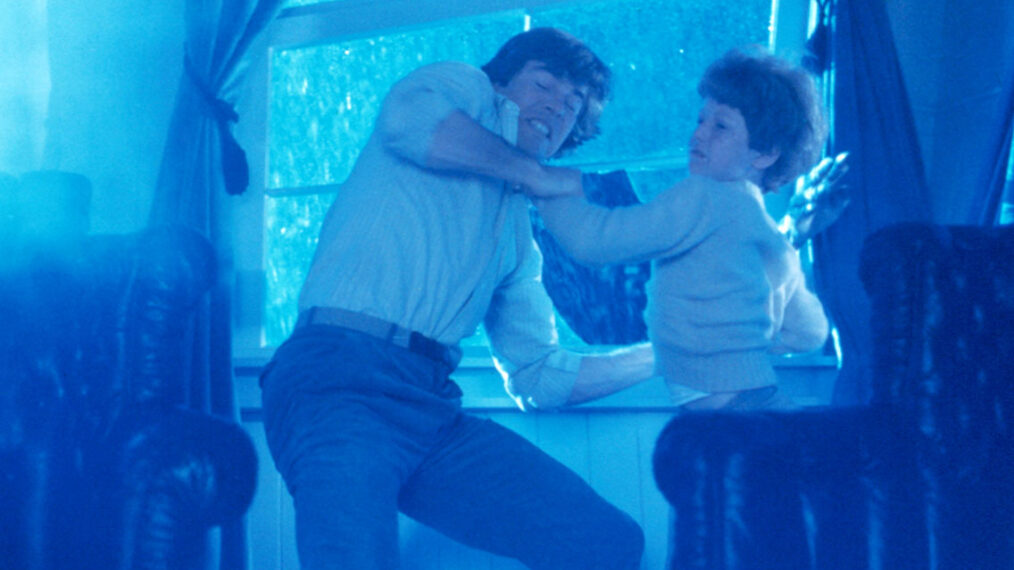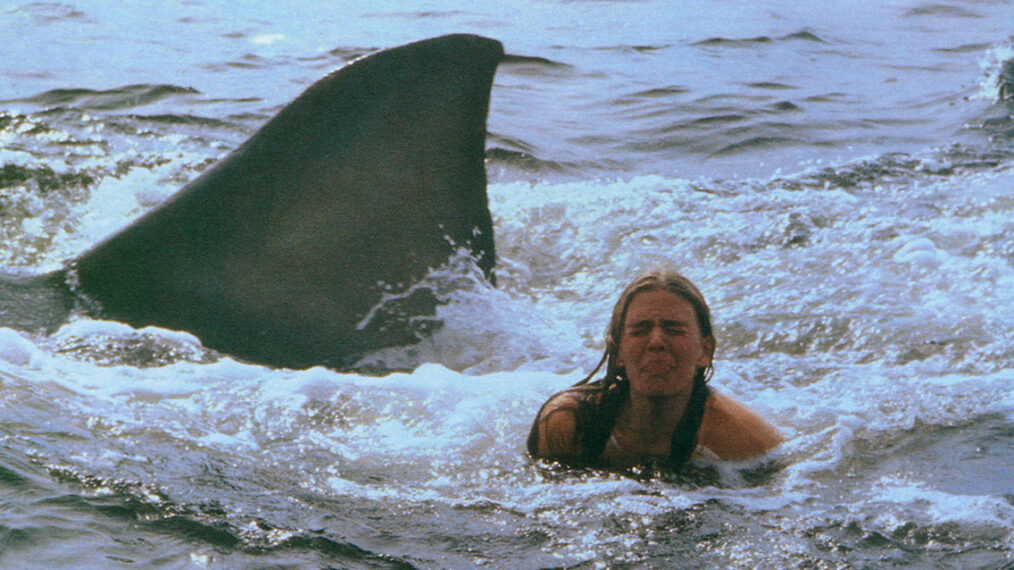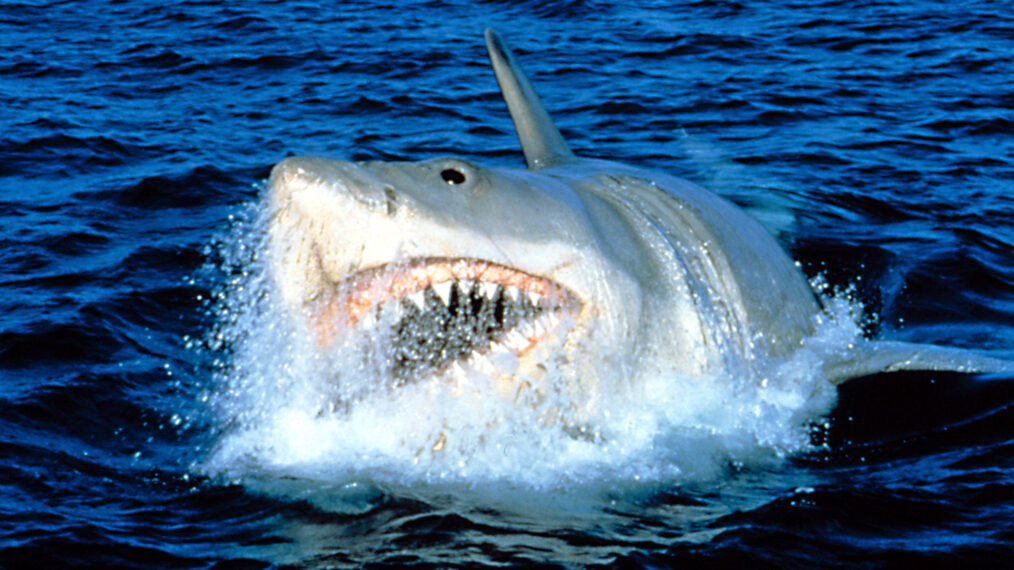40 Years Ago, the ‘Jaws’ Franchise Jumped the Shark With ‘Jaws 3-D’
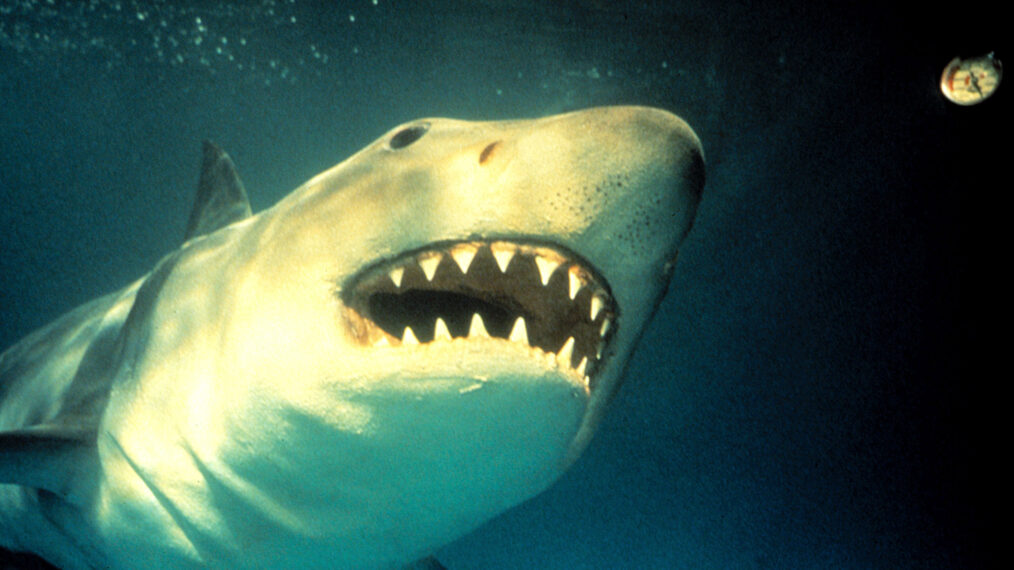
In some multiverse variation of our own world running under an alternate timeline, moviegoers in the summer of 1983 went to see the third installment of the Jaws franchise in the form of a parody, possibly with the title National Lampoon’s Jaws 3, People 0.
That was one early idea for what the third Jaws movie here in our timeline might have been, when Richard D. Zanuck and David Brown — who had produced Jaws, the original 1975 blockbuster classic directed by Steven Spielberg, and its unnecessary but not terrible 1978 sequel Jaws 2 — originally conceived of the third entry as a comedy. Perhaps they realized that continuing to stretch the original premise in a serious way was getting kind of ridiculous, so why not just poke some fun at it?
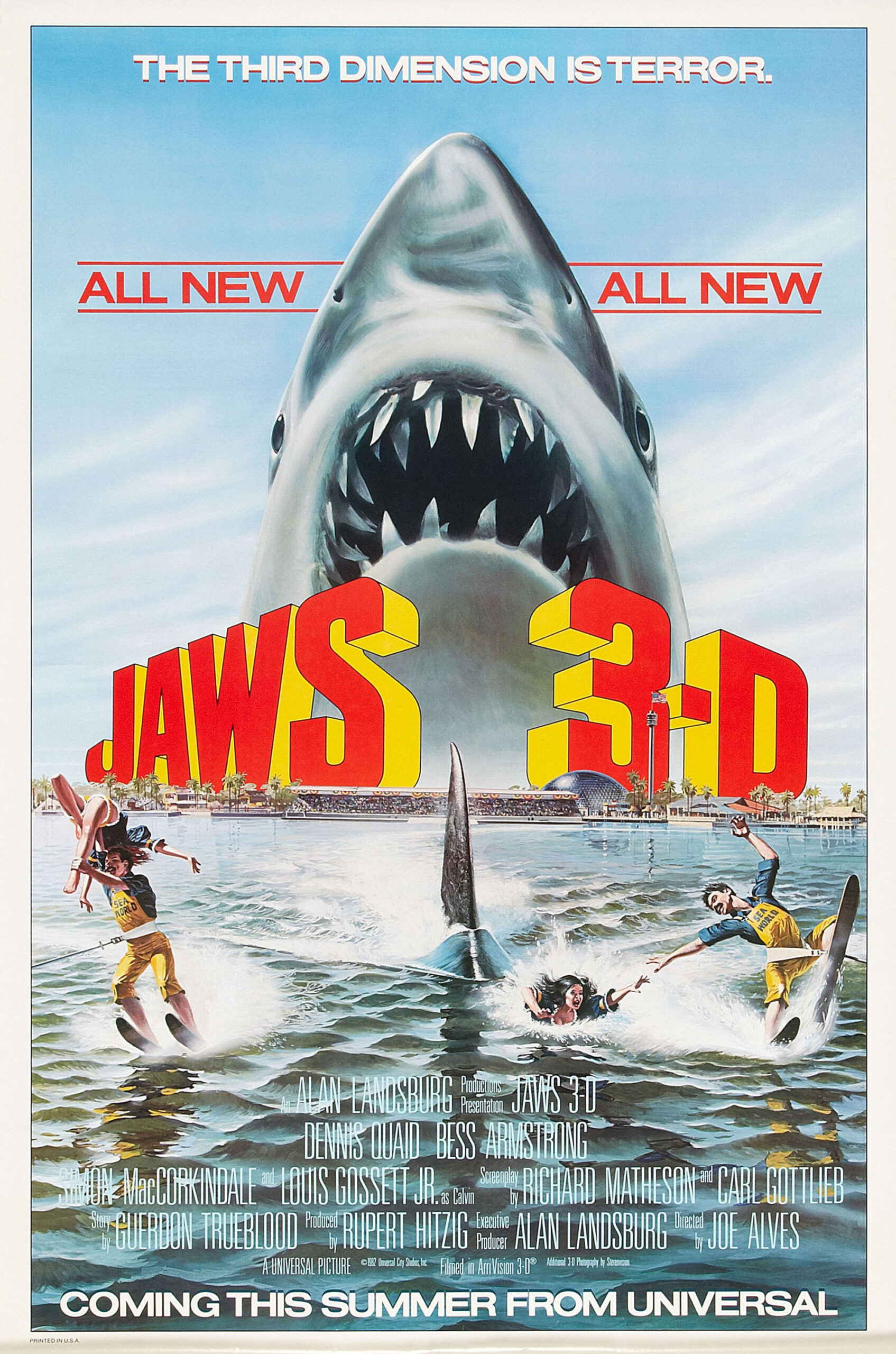
© Universal/Courtesy Everett Collection
Even the advance poster for Jaws 3-D looked cheap and cheesy
It seems Matty Simmons of National Lampoon — which had successfully spun its humor magazine brand into feature films with 1978’s Animal House and Vacation, another summer 1983 release — was even brought on as a producer for what would be hilariously titled Jaws 3, People 0.
A story was outlined, and Lampoon writers, including John Hughes, who wrote Vacation, were even commissioned to write the screenplay, while Joe Dante, who had helmed 1978’s terrific Piranha — itself a very fun Jaws parody that combined humor and horror — was considered to direct.
This all sounds like it would have been cool as hell, and I would have loved to have seen it. (I’d still like to see it!)
Unfortunately, the studio, Universal, ultimately shut down this comedic direction for the film, seeming to get cold feet about mocking what was still a hot property for them less than a decade removed from the first film.
Ironically, the form that Jaws 3 ultimately took — as Jaws 3-D, under new producer Alan Landsburg (creator of In Search Of …) and director Joe Alves, who had been the production designer on Jaws and Jaws 2 (and the second unit director on the latter) — was often unintentionally (and sometimes intentionally) funny and began the process of diminishing the popular killer shark franchise in the eyes of audiences more than I think any spoof would have.
But it did not kill the series off entirely. That would not happen until the clinching blow from 1987’s bottom-of-the-barrel Jaws: The Revenge.
While it certainly is not up there with Jaws, or even quite at the level of Jaws 2, Jaws 3 has something so quirky about it in many of its aspects that I can’t bash it entirely, no matter how stupid I know it is on an intellectual level.
A lot of that stems from the film being inextricably linked to me having seen it in the theater at age 13 with two of my friends sometime in August 1983, a few weeks after its July 22 opening. I can’t see the movie even now without at least a little flashback to that summer afternoon when I finally saw my first and only Jaws movie in the theater.
Jaws was released when I was 5, and being obsessed with sharks at the time, I had implored several relatives to take me to see it. They declined, of course, telling me it was not appropriate for someone my age.
(When I finally saw Jaws in its television premiere on ABC in 1979, I had to admit they were right and that it would freaked me out; as it was, just imagining the movie made me scared that a shark would get me in my grandparents’ swimming pool.)
It was a similar story with Jaws 2, which came out when I was 8. I also waited until its television premiere to see that one.
I was in high school when Jaws: The Revenge was released and could have caught it in the theater had I wanted to, but I really didn’t have the desire based on what I had seen and heard about how bad it was (confirmed when I eventually did see it on HBO or somewhere).
So Jaws 3-D was my only time seeing one of the franchise’s films on the big screen. That was exciting enough, but what also thrilled my 13-year-old self and my pals was the whole 3-D element.
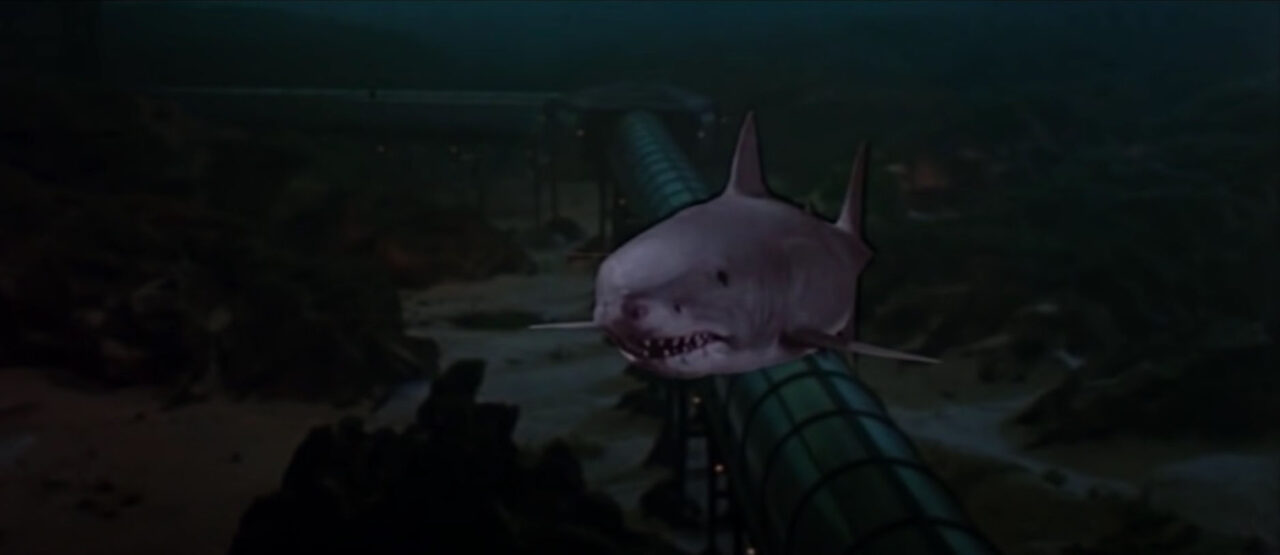
youtube.com/@MOVIECLIPS
The film was released near the end of the early ‘80s revival in 3-D movies, and it was also the only one of those that I saw in the theater.
Between 1981 and ’83, a number of films were released in this format. Like a lot of the titles that had been produced in the original 3-D wave 30 years before, in the ‘50s — like Creature From the Black Lagoon (1954), Revenge of the Creature (1955) and House of Wax (1953) — most of these ‘80s 3-D productions were in the less-reputable genres of horror (like 1982’s Parasite) or sci-fi/fantasy (like 1983’s Spacehunter: Adventures in the Forbidden Zone and Metalstorm: The Destruction of Jared-Syn).
If a franchise in one of these genres was fortunate enough to have been on its third installment at the time, it seemed to be a no-brainer for studio execs to want it produced in 3-D, so they could then tie that in with the “3” in the film’s title.
Along those lines, there was Friday the 13th Part III (1982), which was originally released in 3-D, and Amityville 3-D, which came out in November 1983, about as the trend was dying down.
The Jaws franchise also fell into this category, so its third entry naturally hit theaters as Jaws 3-D, touted with the tagline: “The third dimension is terror.” While some of that terror was questionable, given the hit-or-miss 3-D effects, it at least made the movie unique in the franchise.
I also like that the producers and writers knew they had to finally get away from the Amity Island setting of the first two movies. I think it would have been cool if the Jaws series had gone on with entirely different settings in various parts of the world, and with different characters.
Jaws 3 does have an interesting setting: An undersea theme park within SeaWorld Orlando.
But I do wish that they had not felt the need to continue with members of the Brody family encountering killer sharks about as often as John McClane runs into terrorists.
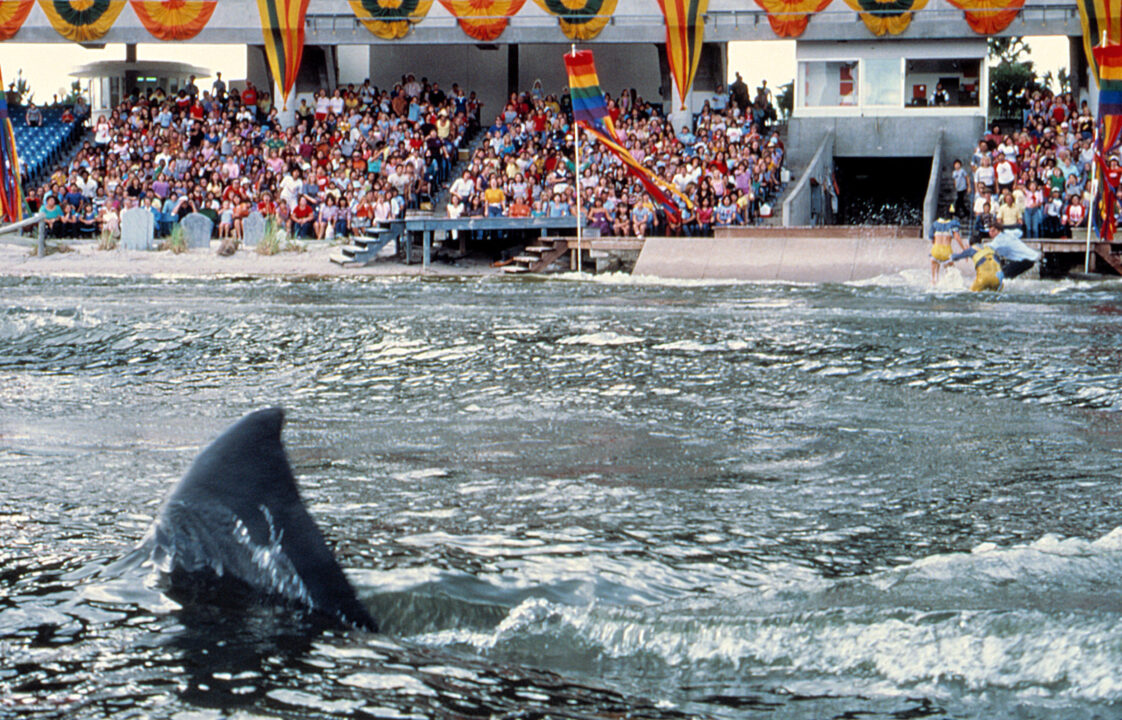
© Universal/Courtesy Everett Collection
(Richard Matheson, who is credited with the film’s screenplay along with Carl Gottlieb, who had helped revise the screenplays for the first two Jaws films, also did not like being forced by the studio to include Brodys in the story, and it doesn’t seem like he was at all pleased with the overall experience, including having his original story outline/script, written with Michael Kane, apparently rejected.)
Here, the focus is not Chief Martin Brody, who had been played by Roy Scheider in the first two films. Scheider was finally able to get out of the Jaws franchise, and he seemed to be having a lot more fun leading a different movie in the summer of ’83: the action film Blue Thunder, costarring the kick-ass helicopter of the title, which had hit theaters in May.
Lorraine Gary is also not on hand as Ellen Brody in Jaws 3 (though she regrettably did return for Jaws: The Revenge, actually coming out of retirement to do so).
The Brodys who get mixed up with the shark action this time are Martin and Ellen’s now-adult sons, Mike and Sean.
Mike Brody is played by Dennis Quaid with an often frantic energy, which might be explained by the fact that he was apparently coked-out in “every frame” of the movie, according to the actor himself.
Mike is chief engineer at SeaWorld, and his girlfriend, Kay (Bess Armstrong), is the park’s senior biologist.
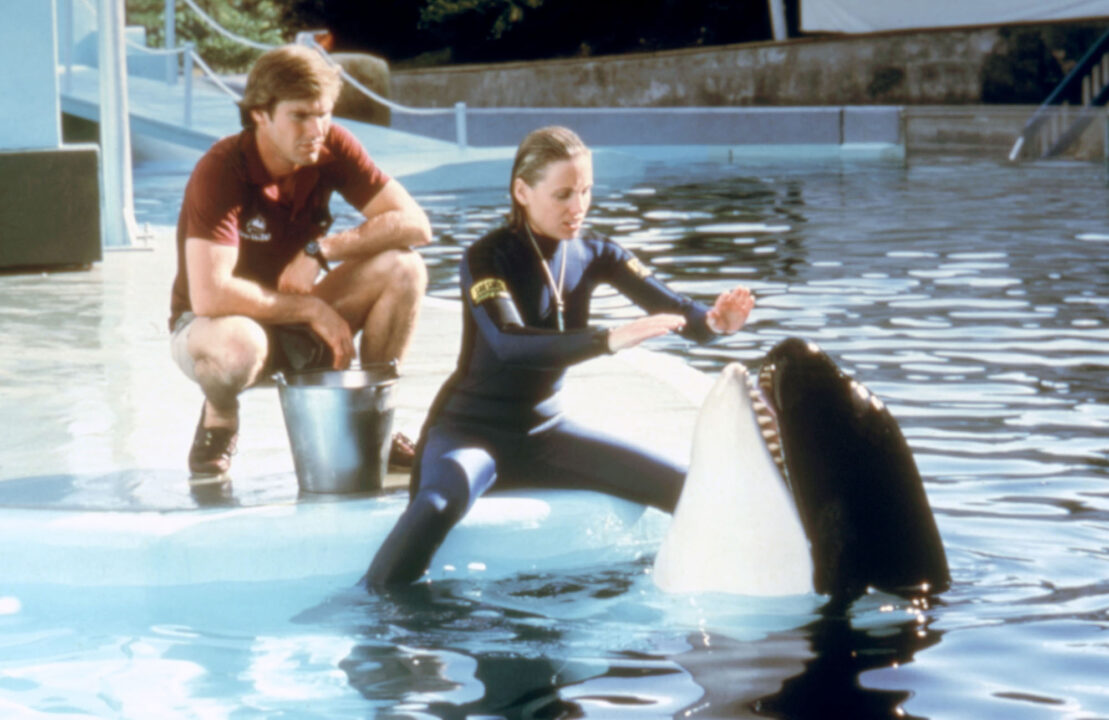
© Universal/Courtesy Everett Collection
Dennis Quaid and Bess Armstrong with an orca costar
Mike’s younger brother Sean, played by One Day at a Time‘s John Putch, comes to visit on his college break and begins a romance with Kelly (Lea Thompson in her feature film debut), one of SeaWorld’s water-skiing entertainers.
The park is managed by Calvin Bouchard (Louis Gossett Jr., fresh off his Best Supporting Actor Oscar win for 1982’s An Officer and a Gentleman), an arrogant businessman who kind of fills the role politicians like Mayor Vaughn had in the first two films.
Simon MacCorkindale, who two months after Jaws 3-D hit theaters would lead another campy cult classic on the small screen — NBC’s Manimal, which only lasted a few episodes, from Sept. 30-Dec. 17, 1983 — plays an adventurer/hunter named Philip FitzRoyce.
Along with a different and interesting setting, and at least a couple of different character types (aside from the Brodys), Jaws 3 does manage a little something different in the fact that there are two sharks for the price of one!
The first shark thought responsible for some attacks after entering the waters of the park from the open sea is captured and (very) briefly kept in captivity at the park before it dies. That part is realistic; great white sharks have never been able to kept in captivity for very long before passing away.
What comes next is a tad more unrealistic: That first shark turns out to have been just a baby, and its 35-foot-long mom, which is also in the park, begins a rampage of her own.
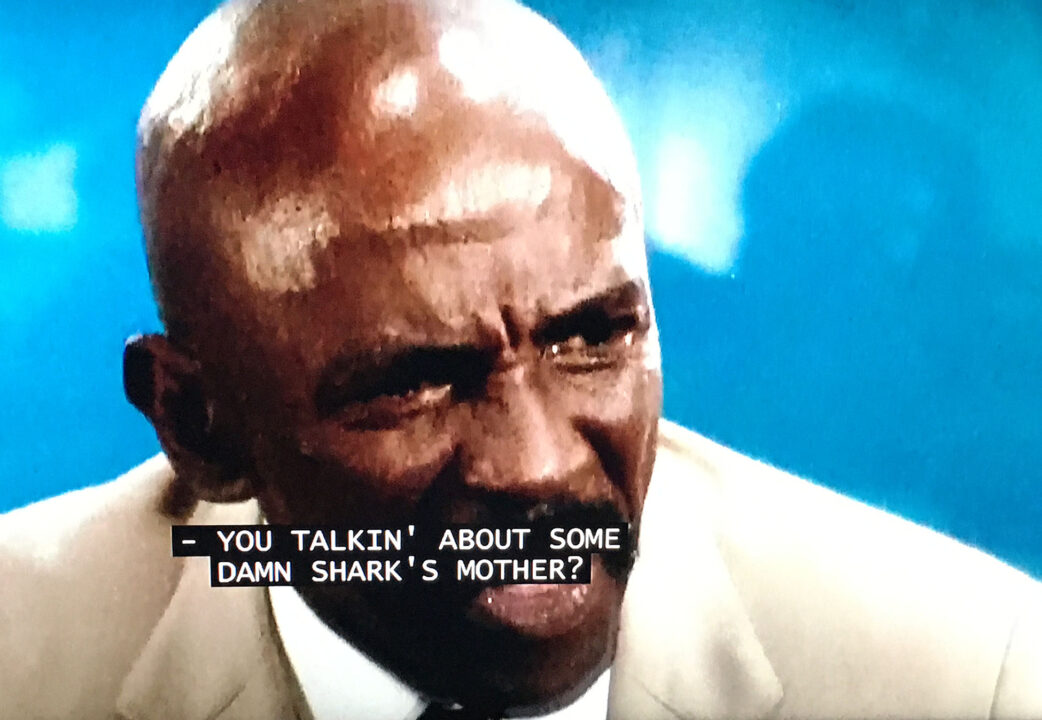
© Universal/screenshot
Yes, Mr. Gossett Jr., I am talking about some damn shark’s mother, because that’s where Jaws 3‘s story leads us. And this mother seems to have a chip on her shoulder about the way her kid was treated, even though sharks are really not known for their maternal ways in real life.
(The franchise would take this concept to even more ridiculous lengths in Jaws: The Revenge, whose shark seemed to have a personal vendetta against the Brody family after somehow knowing how they have exploded or electrocuted their fellow sharks.)
Also defying what we know about sharks … the one here growls. Noticeably enough that closed-captioners of Jaws 3 feel compelled to add the shark’s comments onscreen.
![screenshot from a scene in the movie "Jaws 3." It is a closeup of the shark in some dark, murky water, approaching with its mouth open and teeth bared. A closed caption on the screen reads: "[shark growling]."](https://www.remindmagazine.com/wp-content/uploads/2023/07/Jaws-3-1983-movie-shark-growling-1039x720.jpg)
© Universal/screenshot
The film may not be realistic, but it is different, at least.
And so are some of the attack sequences. We see a shark go after water skiers and even have a go at some bumper boats in the park; and Mike and Kay make a narrow escape from a shark with the help of SeaWorld’s resident dolphins, Cindy and Sandy, among other action.
Scenes like these are punctuated by a musical score not by John Williams, who composed the first two movies, but by Alan Parker, who incorporates a form of Williams’ classic shark theme along with his new and unremarkable music, another example of the franchise’s decline beginning here.
At one point in the film, there is a pretty graphic shot of one victim’s corpse, so Jaws 3 follows in that great Jaws tradition of offering up horrific imagery under a PG rating (if Jaws 3-D had been released the following summer, it surely would have received the newly instituted PG-13 rating).
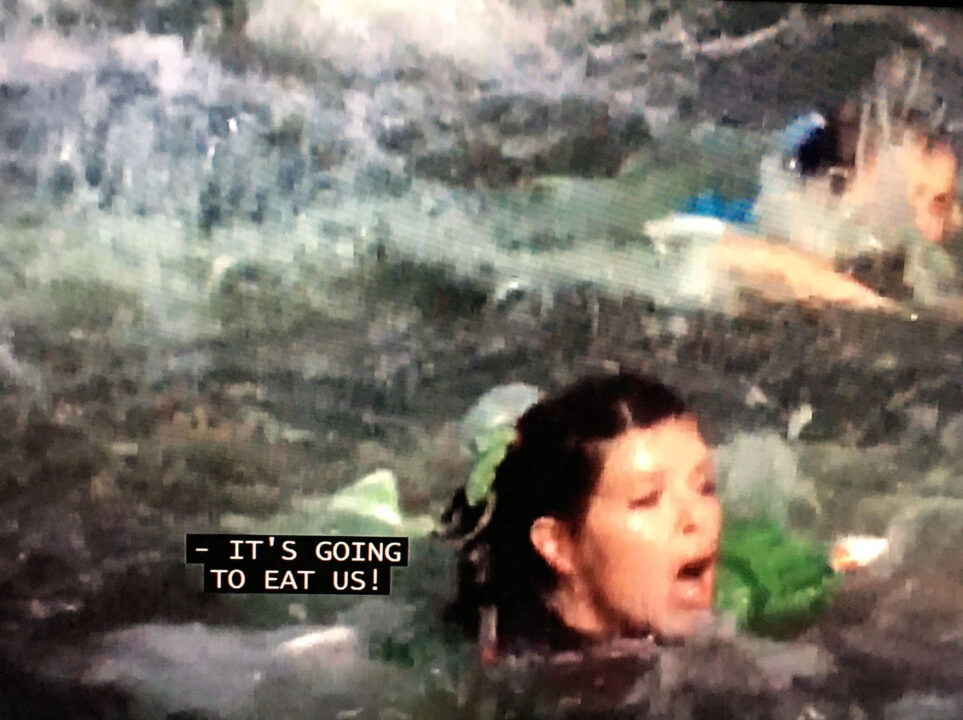
© Universal/screenshot
You don’t know that, lady! Why do people always assume the worst about sharks?
Jaws 3 also has what may be the most uniquely brutal depiction of an attack in the franchise, and that’s saying something.
When FitzRoyce meets his end, Alves actually brings us a view from inside the shark’s mouth as it takes the man entirely in its mouth and starts chomping away; there is blood, and the sounds of crunching and screaming.
That scene is crazy as hell, and almost as funny as it is terrifying, only adding to this film’s overall weirdness.
FitzRoyce’s death ultimately factors into the destruction of the mama shark, which is the moment where Jaws 3, which had been bordering on the ridiculous, passes that point fully as the Jaws franchise starts its jump over the proverbial shark.
The way this shark is killed is a bit of a rehash of the first film, in which the shark is blown up by a bullet into the air tank that is still in its mouth.
That strained credulity, to be sure, but it was well executed and provided an effectively cinematic end to the monster compared to the climax of Peter Benchley’s novel, where the shark simply ran out of room to swim before it reached Brody, had to stop moving and eventually drowned.
Here, the shark is also blown up by something it still happens to have in its mouth: FitzRoyce’s upper body and arm, with his hand still clutching a grenade he did not get the chance to use, are somehow still still resting right within the shark’s mouth, despite it having eaten at least one other person after FitzRoyce.
Mike manages to get a hook into the grenade’s pin and pulls it, causing an explosion of blood, guts and jaws in what I recall as a pretty hilarious display in 3-D, and more so now in 2-D.
I remember some of the film’s 3-D effects like that one being laughable even to a few of us 13-year-olds at the time, and the fact that it was shot in that format is a big part of why, when watched in 2-D on television today, Jaws 3 looks really off, and kind of dark, grainy and cheap, in a lot of its scenes.
You can still see obvious moments in the movie that were originally in 3-D. There would be no reason, for example, for the camera to be lingering for several seconds on a severed fish head or a man’s severed arm as they slowly floated toward the screen, or for a fired crossbow to shoot directly out toward the camera, in a standard film.
I was disappointed 40 years ago that there weren’t nearly enough 3-D shots involving the shark. A notable one was when the mother great white burst through the window of the undersea restaurant, with shards of glass seeming to fly out of the screen as the shark followed.
And there was that explosive ending, with the sharks’ blood and various body parts slowly floating toward those of us in the audience.
But like too many older 3-D movies, cool shots like those were offset by lamer ones that were just excuses to use the technology; like having a diver stick his harpoon out toward the camera, or having a frog jump out during a scene where a couple of guys were in a swamp for some reason.
Even the cooler scenes were simultaneously silly to us at the time, and I do remember my friends and I having some laughs over them. And if you can’t even impress some 13-year-old boys, I don’t know what to tell you.
Those effects look especially bad when seen in 2-D on television now, both because of the process through which they were created and simply due to their overall poor execution by filmmakers who were not as skilled as Spielberg or even Jaws 2 director Jeannot Szwarc.
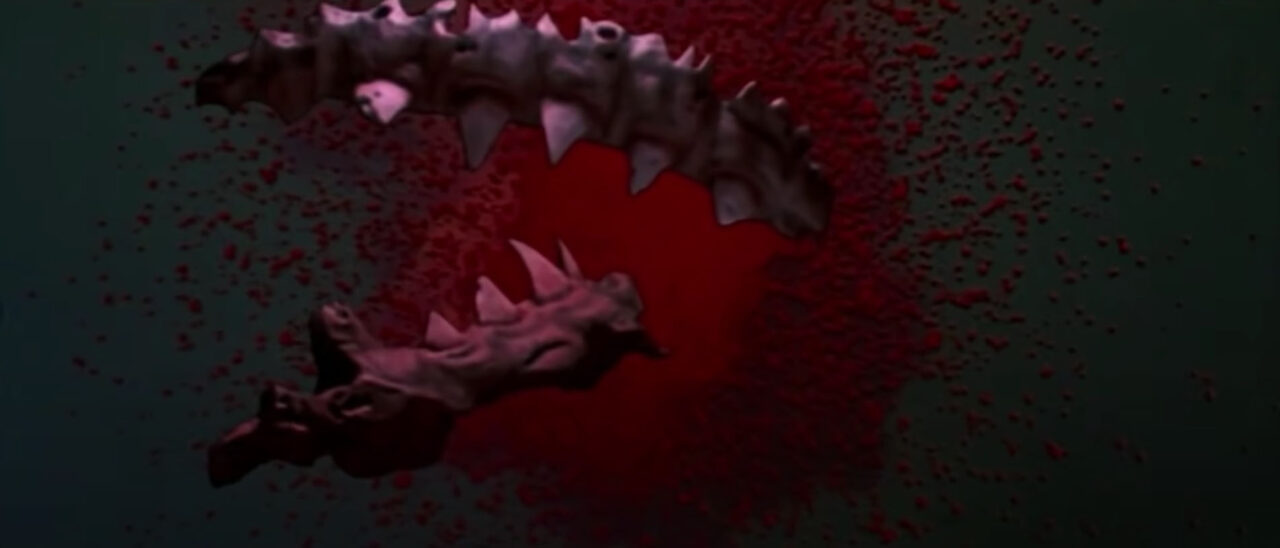
© Universal/screenshot
Pretend these exploded shark innards are comin’ at ya in 3-D
Ultimately, though, its overall weirdness, and especially the tinge of nostalgia and memory that I’ll always have of seeing it on a summer afternoon with some good friends 40 years ago, is part of what keeps Jaws 3 (especially in its Jaws 3-D version) from being a complete failure in my mind.
On top of that, it is redeemed by the fact that its follow-up, Jaws: The Revenge, is so much worse.
I’m glad that one is not celebrating a notable anniversary anytime soon, so I won’t feel compelled to revisit it.
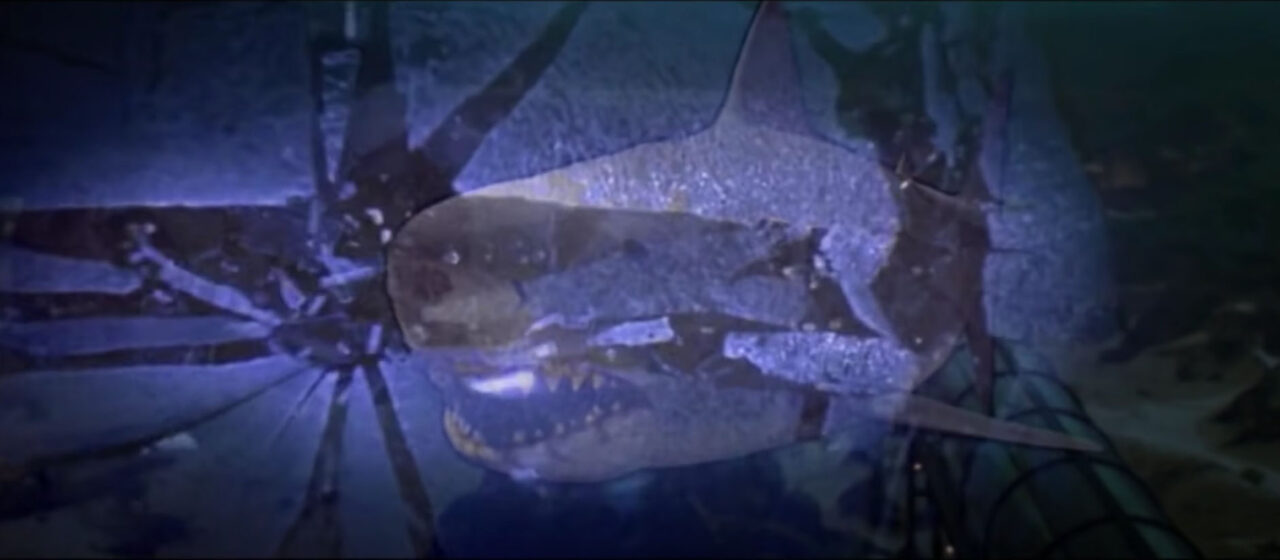
© Universal/screenshot

